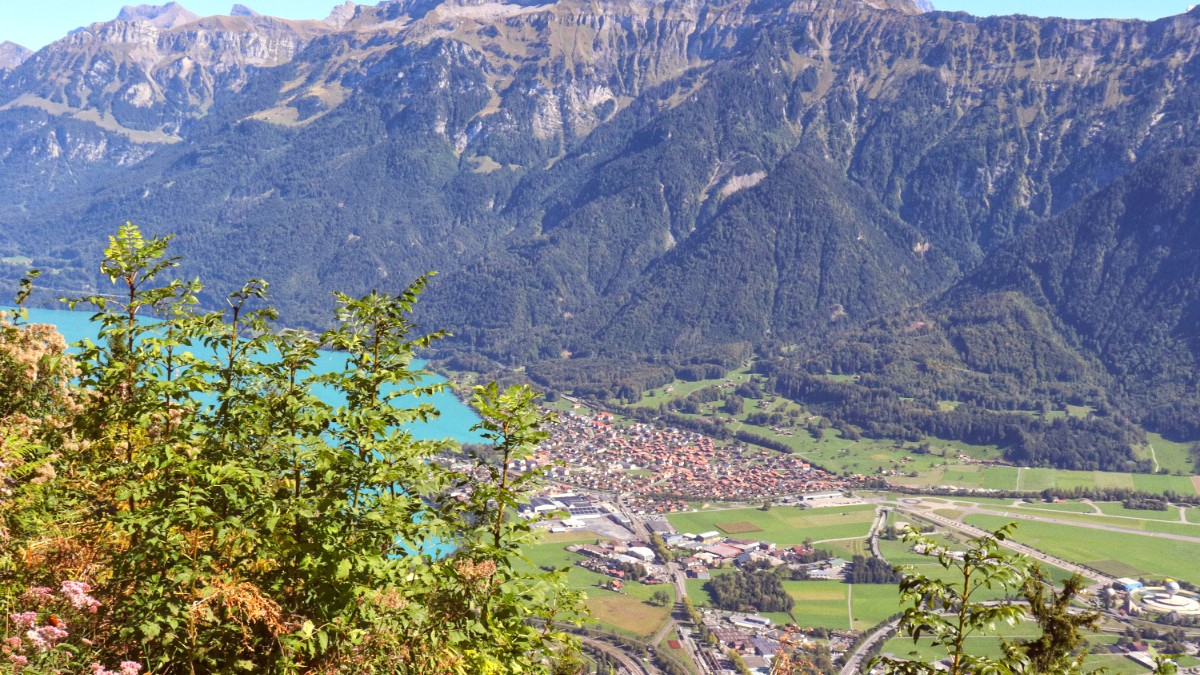
Central Switzerland And Berner Oberland, Switzerland
The air here is clean and invigorating, carrying the scent of pine and distant mountain snow. Visitors come seeking both peace and thrill, finding both in abundant measure. From the moment you arrive, Interlaken's charm takes hold, promising days filled with breathtaking views and memorable experiences.
The geological makeup of the region, characterized by limestone and granite, also created fascinating natural wonders like the St. Beatus Caves, carved by water over millennia.
The powerful Aare River itself, flowing from the high Alps, sculpted the impressive Aare Gorge, a testament to the enduring forces of nature. Every turn in Interlaken shows a new facet of its incredible geography, from the quiet waters of its lakes to the imposing faces of its mountains.
Interlaken's story stretches back centuries, long before it became a renowned tourist destination. Its origins trace to the founding of an Augustinian monastery in 1133. This monastery, named "inter lacus" or "between the lakes," gave the town its enduring name. For nearly 400 years, the monastery was a significant regional power, holding considerable land and influence throughout the Bernese Oberland. It acted as a spiritual, economic, and political hub.
The 19th century brought a period of modern tourism. With advances in transportation, more people could reach remote destinations. Interlaken was perfectly positioned to capitalize on this trend. The construction of new hotels, many grand in scale, began to dot the landscape, offering comfort to increasing numbers of visitors. The true revolution, however, came with the railway.
Augustinian Monastery founded, giving the town its name 'inter lacus'.
Secularization of Monastery, lands transferred to Canton of Bern.
Artists and writers discover and spread word of the picturesque scenery.
First railway lines reach Interlaken, opening the town to international tourism.
Jungfrau Railway completed, making the high alpine world accessible to all.
This brief overview provides quick facts to grasp the town's essence and its place in Switzerland.
Interlaken sits in the Bernese Oberland, a famous region within the Canton of Bern, Switzerland. Its elevation, around 568 meters (1,864 feet) above sea level, provides a comfortable base year-round. The municipality of Interlaken has a population of around 5,910 residents as of 2023. Swiss German is the everyday language, with English widely understood.
Tourism forms the backbone of Interlaken's economy. The town's identity is inseparable from its natural surroundings. Lake Thun and Lake Brienz define its borders. The Aare River flows directly through it. The backdrop of the Jungfrau region mountains – the Eiger, Mönch, and Jungfrau – provides a constant reminder of the majestic alpine world just beyond the town's edge.
Interlaken Ost is the more significant hub, a departure point for trains to the Jungfrau region's mountain villages and major Swiss cities. Interlaken West provides access to the town center and Lake Thun.
The region experiences four distinct seasons, each with an unique charm and set of activities.
Consider checking the specific operating dates for all mountain railways and cable cars on their official websites (e.g., Jungfrau Railways, Harder Kulm) as these vary seasonally and for maintenance.
Warm, sunny days ideal for hiking, water sports. Expect occasional thunderstorms. All attractions operational.
Fewer crowds, pleasant temperatures, changing colors. Weather can vary. Some high-altitude closures.
Snowy wonderland, prime for skiing/snowboarding. Colder air, shorter days. Festive atmosphere.
Citizens of many non-EU/EFTA countries need a Schengen Visa for stays up to 90 days within any 180-day period. This visa covers tourism, business, or family visits. Apply at the Swiss embassy or consulate in your country of residence.
Travelers from EU/EFTA countries, the United States, Canada, Australia, New Zealand, the United Kingdom, and many other nations can enter Switzerland for tourism for up to 90 days within a 180-day period without a visa.
Always verify the current list of visa-exempt countries based on your nationality through official Swiss government websites or your country's foreign affairs department. Even if visa-exempt, you must still meet other entry conditions.
Switzerland has one of the lowest crime rates in the world, a very safe country for travelers.
Petty crime, like pickpocketing, is rare but occurs in crowded tourist areas or on public transport, as in any popular destination. Simple precautions are always wise.
There are no specific neighborhoods in Interlaken with elevated safety concerns.